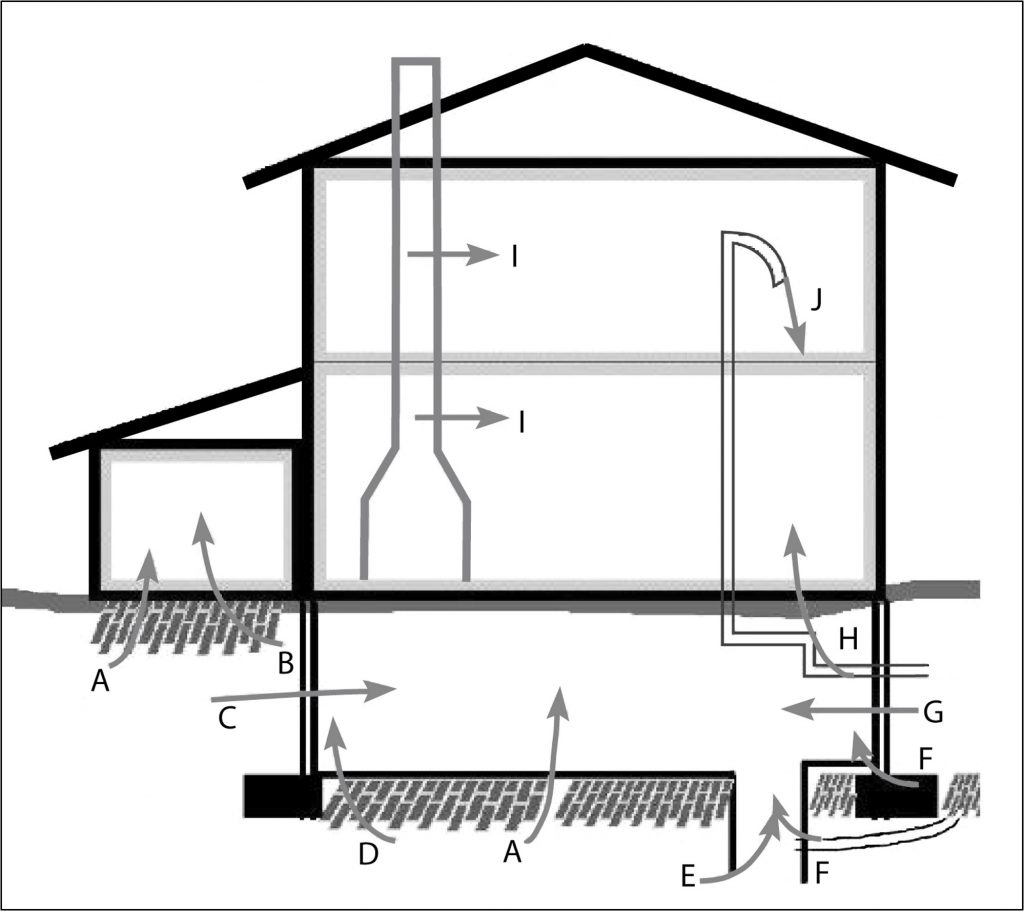Additional Radon Pathways
Section Progress
0% Complete
The following foundation openings may allow soil gas to bring in radon:
- The opening between the basement and crawl space.
- Cracks in concrete slabs and walls.
- Sump holes (may be connected to earth, gravel drainage, perimeter drain pipes, waterline, or a variety of other transport paths).
- Floor drains (connected as above).
- Holes through slabs under tubs, showers, or toilets where space was left around traps.
- Holes in the slab around pipes.
- Heating ducts run under slabs.
- Pores, cracks, gaps in mortar, and open tops in concrete block walls.
- Holes in slabs where wooden stair stringers or pieces of blocking penetrate the slab.
- Cracks in slab around support columns.
- Support walls for fireplaces.
- Cracks at the wall joint in a basement (especially the perimeter expansion joints and canal drains).
- Cracks around water, gas, and utility entry lines.
Figure 3-21 illustrates radon entry into buildings by transport mechanisms and pathways that typically facilitate radon entry.
- A) Cracks in concrete slab
- B) Cracks between poured concrete & blocks
- C) Pores & cracks in concrete blocks
- D) Slab-footing joints
- E) Exposed soil, as in sump
- F) Weeping tile
- G) Mortar joints
- H) Loose fitting pipes
- I) Granite
- J) Water

